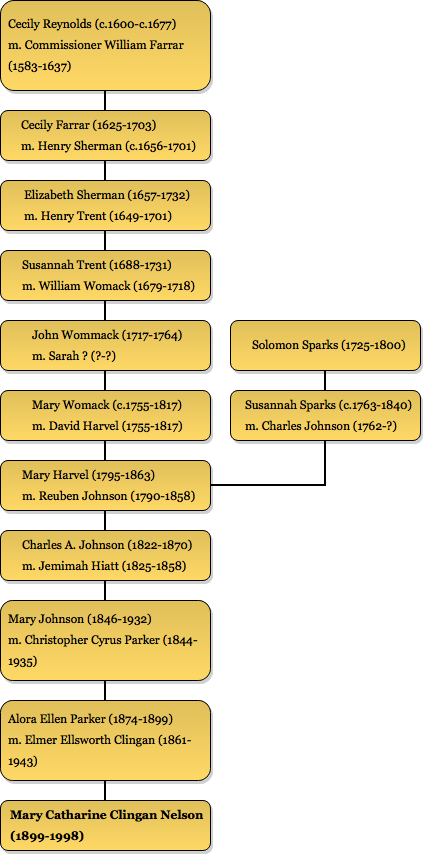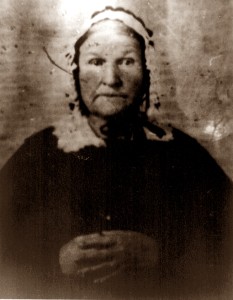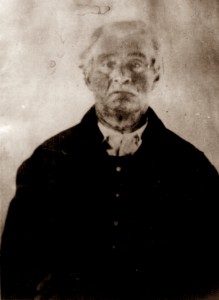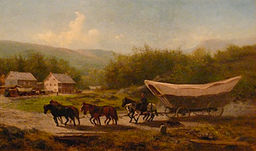1610-1830
Virginia and North Carolina

A tobacco plant (Nicotiana tabacum), its flowers and seeds, bordered by six scenes illustrating its use by man. Coloured lithograph, c. 1840.
In 1606 the Virginia Company of London received a charter from the newly-crowned King James I to establish an English colony in the New World. Three ships were sent, and on May 13, 1607, the first settlers arrived and selected the site of Jamestown Island as the place to build their fort. Sadly the first year for this colony was a disastrous one. Food supplies dwindled. Malaria and then a harsh winter as well as skirmishes with the Indians besieged the colonists. Only 38 of the original 144 settlers survived.
About three years later the earliest known of our family immigrants, Ciceley Reynolds who was probably still a child, arrived in Virginia with someone other than her parents. During the next few years there are various accounts of her possible five marriages and involvement in a breach of promise suit that was taken back to England for resolution! Later, her granddaughter became the wife of the immigrant William Womack. By the end of the century the Harvilles and the Johnsons had also arrived. These three Virginia colonial families settled and lived in relatively close proximity for almost 200 years. Gradually they merged into the ancestral line of Mary Johnson, my mother’s grandmother.
There were three Womack brothers who were prominent figures in the management of the Virginia Company. We do not know if there was a direct line relationship from them to my mother. However, we do know that Charles Womack and his son William came to Virginia about 1630 and settled in Henrico County. Both father and son owned land on the James River and very likely became tobacco planters. The Womacks were Quakers and members of the first Quaker Meeting in the Colony of Virginia.
They lived in the James River area east of the Fall Line for about two generations, and then gradually moved south into North Carolina seeking better land to cultivate tobacco. One note we have found indicates that William Womack’s son Richard was a trader with Indians and was probably killed by Seneca Indians while returning from a trip to the interior.
During the same time in this early history of the Virginia Colony John Harville, of French ancestry and possibly a Huguenot, arrived in Virginia. The Protestant Reformation had reached France in the sixteenth century and the movement was embraced by members of the French nobility as well as intellectuals and trade professionals who desired greater religious and political freedom. The movement flourished for about 100 years, but then it was declared heretical and Huguenots were ordered to denounce their faith. As a result of this persecution, some of these Huguenots sought refuge in England and the Netherlands.
One researcher tells that in the 1500s five Harville brothers left France and went to England, and then in 1635 John Harville came to Virginia. Some Harvilles moved to North Carolina while others stayed in Virginia. We know little about this family except that John was the immigrant and David was his great great grandson. The name Harville appears in the records with various spellings: sometimes Harvil and sometimes Harvel. David Harville and Mary Womack were married in 1772 in Virginia thus joining two lines of Mother’s 3rd great grandparents 150 years after first arriving and only about 100 miles south of where their ancestors had first touched the American shore.
At the same time as the settling of the Colony of Virginia England was plagued with severe economic conditions at home. Many poverty stricken men looked anxiously for a means to escape their poverty and better their economic and social positions. English law allotted to every settler in the colonies fifty acres of land for each person he brought to the new world. Not being able to afford the cost of transportation to the colonies many of these unfortunate men, as payment for passage, gave their right to the fifty acres of American land to enterprising colonialists like those involved with the Virginia Company. Having thus become indentured they worked under almost slave-like conditions for a defined time period with the hope of eventually having their own land in America.
There was also the distressing problem of vagrant children roaming the streets of London, some orphaned by the plague and some belonging to families too large to support them. The Virginia Company, always seeking more and more laborers to grow and support their tobacco economy, took advantage of these situations. They requested that some of these children be gathered into groups and sent to Virginia as so-called apprentices and then to be given land and their freedom on reaching maturity.
We do not know what were the circumstances that brought John Johnson to America. He married Ann after he arrived in Jamestown where there are numerous records of land transactions with the Johnson name attached. By 1623 he was married with two children according to a muster taken at Jamestown. By 1625 he owned 200 acres on James Island. In 1635 with his son John he requested more headrights (land grants), possibly taking advantage of the vagrant children to be transported on three different ships. For at least three generations the Johnsons’ descendants were tobacco planters in the region of Virginia between the Rappahannock and Potomac Rivers where in 1712 the immigrant John Johnson died. There is evidence that descendants of the first Johnson family at one time made an exploratory trip to Tennessee and perhaps briefly resided there. Others eventually bought land in Surry County, North Carolina where John’s fourth great-grandson Reuben Johnson and Mary (Womack) Harvel were married in 1812 joining three of Mother’s Virginia immigrant families.
By 1754 several Sparks families who had originally settled in Maryland also migrated to North Carolina and acquired more land for tobacco along the Yadkin River next to land owned by Daniel Boone. Another incentive for moving from Maryland to North Carolina at that time was a growing fear that warfare between England and France was imminent and that this would result in Indian uprisings in western Maryland. Then twenty years later the Continental Congress declared independence from Britain, but some colonists called Tories, or Loyalists, were not ready to break from the old world, wanting to remain loyal to the British king. The War of Independence broke out, and there is a fascinating anecdote regarding Solomon Sparks, my mother’s 3rd great-grandfather who was a Tory. It has been told that he was ambushed by American Patriots outside his cabin on the Yadkin River, bound, and sent floating down the river in a canoe!
His daughter Susannah Sparks married Charles Johnson in Surry County, North Carolina in 1784. Two lines of Virginians, the Harvilles and the Womacks, had been joined in Virginia in 1772. The Johnsons were joined with the Maryland Sparks in North Carolina in 1784.
Quakers, many of whom had migrated from Pennsylvania to Carolina were much opposed to both slavery and warfare and in large numbers started leaving North Carolina to go west into the recently acquired Northwest Territory. They probably followed the Wilderness Road through the Cumberland Gap blazed by Daniel Boone.
Some families settled in the Ohio territory for a few years and then resumed their search for land and continued on to Indiana.
The Reuben Johnsons and most of their children’s families joined this migration and were in a group which arrived in Randolph County, Indiana about 1830. They were among the earliest settlers of Randolph County. Reuben and his wife Mary and other members of their family are buried in the Riverside Cemetery, Nettlecreek Township. Their son, Charles A. Johnson, and Jemimah Hiatt from the Welsh Quaker family, whose story we will tell later, were married in 1844 in Henry County, Indiana on the western frontier of the newly acquired Northwest Territory. Here were born their family of ten children including Mary Johnson, the grandmother who reared my mother, Mary Catharine Clingan, in the village of Nachusa, Illinois at the beginning of the twentieth century.




